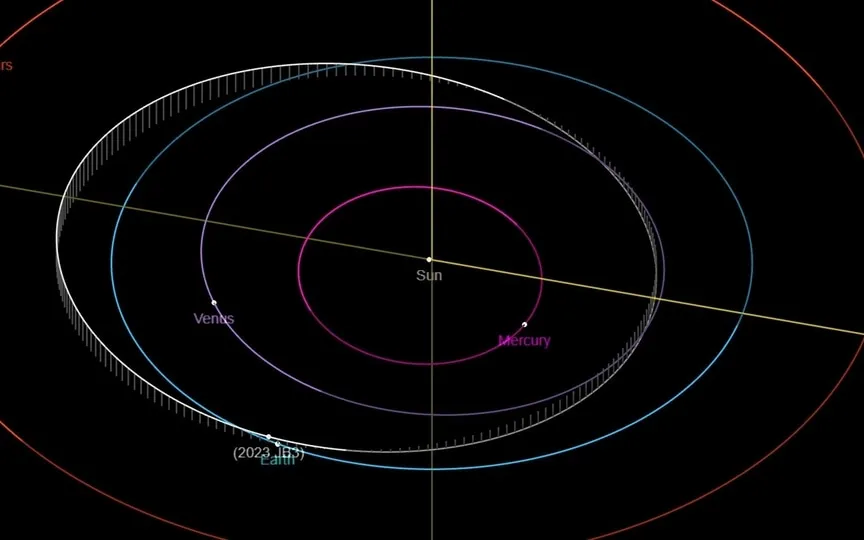NASA Data Shows Asteroid Approaching Earth at High Velocity for Close Encounter
Asteroids are classified into three main types: C-type, S-type, and M-type. The most common type is C-type, which is made up of carbon-rich materials, while S-type asteroids, composed mainly of silicate minerals, are less frequent. M-type asteroids, which are primarily composed of metal, are the least common. Studying asteroids is crucial as it can offer valuable insights into the early stages of the solar system and planetary formation. Additionally, these celestial bodies may contain valuable resources such as metals and water that could be utilized in future space missions.
NASA has recently issued a warning about one such mammoth asteroid that is set to come close to Earth in the near future.
Asteroid 2023 JB3 details
The asteroid, named Asteroid 2023 JB3 by NASA’s Center for Near Earth Object Studies (CNEOS), will make its closest approach to Earth tomorrow, June 9, at a distance of 5.4 million kilometers. It is hurtling towards Earth at a terrifying speed of 25018 kilometers per hour. Asteroid 2023 JB3 belongs to Apollo’s group of Near-Earth Asteroids (NEAs).
The worrying thing about this asteroid is that it is the size of a mammoth. At nearly 160 feet wide, it can be compared to huge airplanes! It belongs to the group of Aten asteroids, which are Earth-crossing Near-Earth Asteroids (NEAs) with semi-major axes smaller than Earth’s. They are named after the asteroid 2062 Ate.
NASA tracks asteroids with a combination of ground-based and space-based telescopes. The NASA-funded Asteroid Terrestrial Impact Last Alert System (ATLAS) scans the night sky for moving objects and reports possible asteroid sightings, while some space-based observatories use infrared sensors to detect asteroids and their properties.
Who observes near-earth objects from the sky?
More and more asteroids have flown past Earth, albeit at a safe distance. NASA’s Planetary Defense Coordination Office monitors the sky with telescopes and tracks future near-Earth object (NEO) flybys. With the help of advanced telescopes, more than 750,000 asteroids have been discovered so far, of which more than 27,000 are near-Earth asteroids.




